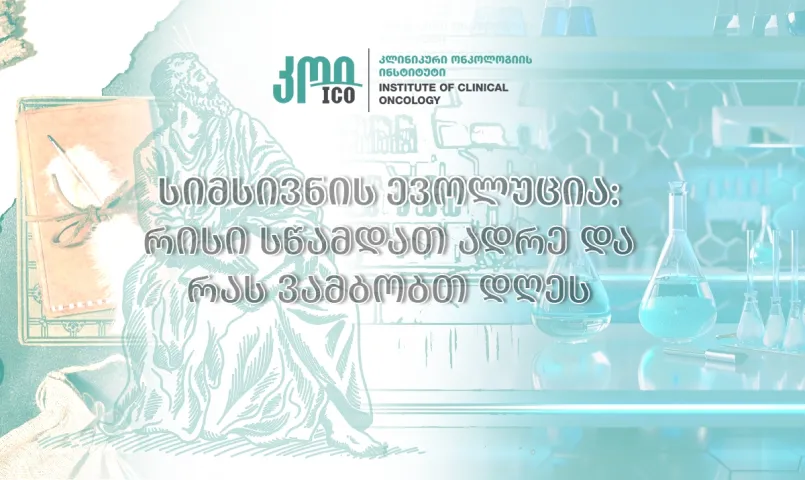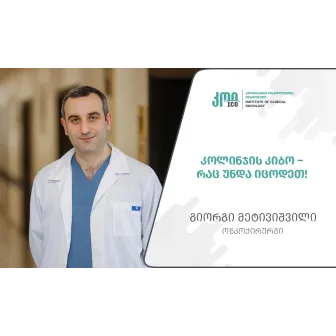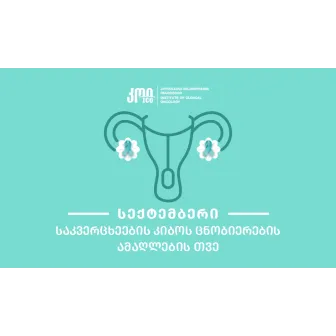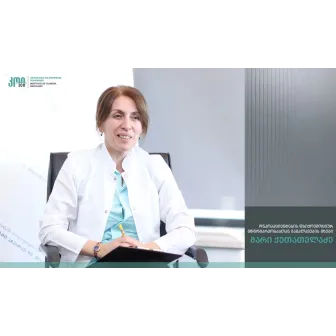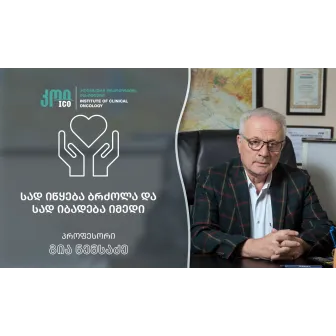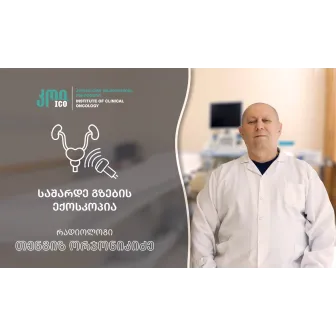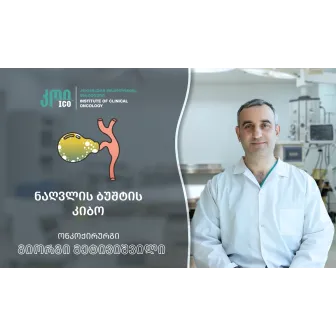Cancer etiology has remained one of the most important and unsolved topics in human history for centuries. How and why does cancer arise? – Looking for an answer to this question dates back to ancient Greece and is still considered one of the most pressing issues in medicine.
The author of the article, Professor Paata Khorava, shares interesting historical facts and the achievements of modern medicine. The article displays to the readers how cancer evolution therapies were developed and how modern science came to the current medical vision.
Evolution of Cancer Etiology Perceptions
The doctrine of cancer has a history as long as medicine itself. The first references to cancer date back to ancient Egypt and India. A more detailed description of cancer can be found in the writings of Hippocrates. While attributing the cause of disease to dyscrasia (disbalance in the ratio of mucus, yellow, and black bile in the body), Hippocrates attributed the cause of cancer to poisonous "black bile" (Melancholia carcinogenes). With this, he explained the high incidence of cancer in people described as "venomous and malignant" who are prone to depression. Galenius shared this viewpoint. Avicenna believed that "solid tumors" develop as a result of phlegmon or scarlet fever.
At the beginning of the 19th century, it was proven that tissue growth occurs through cell proliferation, which in turn became the basis of cell theory (1839), and later of R. Virchow's Cellular Pathology (1855). In the second half of the 19th century, two theoretical concepts of tumor formation were developed – R. Virchow's irritation theory (1863) and I. Konheim's dysembryogenesis theory (1877). At the beginning of the 20th century, other theories also appeared. E.g., R. Pfeiffer's and V. Podvisotsky's “parasitic-infectious theory.” These scientists considered the tumor to be a special parasite.
In 1913, I. Fibiger identified the helminth Spiroptera as the cause of rat stomach cancer, for which he was awarded the Nobel Prize in 1927 by mistake (?!) In 1903, A. Borelli formulated the viral theory, and in 1914, T. Boveri put forward the mutational theory. In the same years, the idea of an endogenous metabolic concept of the origin of tumors was raised. However, neither theory was able to convincingly explain natural or experimental tumorogenesis.
By the 1950s, it was proven that tumors develop when the body is exposed to chemical and physical factors. Having gained many supporters among scientists, the theory of physical and chemical carcinogenesis replaced Virchow's irritation theory.
Study of the role of dysembryogenesis. By the beginning of the 20th century, some tumors of dysontogenetic origin were described and it was established that the cause of their development was exogenous irritant factors. Subsequent studies laid the foundation for the "epigenetic" theory, according to which the formation of tumors is the result of impaired cellular proliferation and differentiation.
Evolution of the irritation theory. At the beginning of the 20th century, skin cancer and leukemia caused by X-rays were described. Soon, malignant tumors were obtained in animals experimentally with ultraviolet rays, and by the end of the 30s, soft tissue sarcomas were obtained by implanting a foreign body. These studies laid the foundation for the idea of "physical carcinogenesis" - the development of malignant tumors by physical factors.
The study of chemical carcinogenesis was launched in 1755 with the chrestomathic observations of Percival Pott. He described scrotal cancer in chimney sweeps and attributed its occurrence to the harmful effects of soot. At the end of the 19th century, frequent incidences of bladder tumors in aniline dye mill workers in Germany and England were described.
In 1916, K. Yamagiwa and K. Ichikawa induced skin cancer in rabbits by the repeated application of coal tar. In 1930, E. Kinway and D. Cook isolated benspirene in pure form from the resin and called it a carcinogen. By the end of the 1930s, dozens of chemical carcinogens had been described.
In 1938, L. Shabad induced tumors in mice using organ extracts from patients deceased of oncological diseases, giving rise to the concept of "endogenous carcinogenesis." In 1941, while studying chemical carcinogenesis, I. Berenblum divided the process into two stages: initiation and promotion.
Viral Carcinogenesis. In 1907, J. Sipho performed a human-to-human transplantation of acellular papilloma filtrate. In 1908, B. Ellerman and O. Bang induced erythromyelogenous leukemia in chickens by injecting plasma filtrate. In 1911, P. Rouse reported to the world the vaccination ????? of chicken sarcoma with acellular filtrate.
1911 წელს პ.როუზმა მსოფლიოს ქათმის სარკომის უუჯრედო ფილტრატით გადაცრის შესახებ შეატყობინა.
Due to the skeptical attitude towards the role of viruses in the etiology of tumors, the discovery of some viruses causing tumors in the human body was not given due attention: skin papilloma (W. Wiley, L. Kindger 1919), condyloma acuminata (L. Weltz 1919) and laryngeal papilloma (E. Ullmann 1923). In 1932-34, R. Shope isolated the virus from rabbit fibroma and papilloma. In the same year, B. Luke isolated the virus from toad liver cancer.
The virus called “milk factor” discovered by J. Bittner should be specially noted. In 1945, L. Zilber laid the foundation for a new concept, which later entered science under the name “viro-genetic theory.” In 1951, L. Gross proved that oncogenic viruses are transmitted vertically, that is, from generation to generation. In 1960, B. Sweet and M. Hilleman discovered an oncogenic virus that spread in monkeys and called it the simian virus - ShV-40. Soon, a new virus was discovered, oncogenic for humans: Epstein-Barr virus, the causative agent of nasopharyngeal carcinoma and Burkitt's lymphoma.
Study of the heredity role. By the beginning of the 20th century, extensive material had accumulated about the so-called familial tumors. The term hereditary predisposition (predisposition) was introduced. At the end of the 20s, there were reports that carcinogenic factors (radiation, some chemicals) can cause both mutation and tumor in experimental animals. In 1929, K. Bauer, based on new data, extended this theory. In the same period, B. Fischer-Wassels developed the regenerative-mutational theory. This theory of the causal genesis of tumors is as follows: as a result of various types of irritations, inflammatory processes develop in tissues, during which a new group of cells regenerates as a result of the degeneration of a certain group of cells. As a result of repeated degeneration-regeneration, mutated cells are formed, which, in the presence of a predisposition, give rise to the development of tumors. According to this theory, tumors develop not from normal, but from undifferentiated cells formed during the regeneration process.
By the 1950s, geneticists had proven that physical and chemical carcinogens damage the cell genome. These data made it possible to reconcile the physical, chemical, and mutational theories of carcinogenesis. It became possible to assess the role of genetic predisposition in carcinogenesis. E.g., in 1985, J. Yunis linked the development of retinoblastoma to the aberration of a proto-oncogene at one of the loci of chromosome 13.
Study of hormonal-metabolic factors. In 1713, the Padua physician U. Ramazzini drew attention to the higher incidence of breast cancer in nuns compared to lay women, i.e. this was the first observation of hormonal cancer in women. Due to the possible role of hormones in the development of breast cancer, doctors resorted to ovariectomies by the end of the 19th century. By 1915, the hypothesis of "hormonal carcinogenesis" was formulated. The glycolytic theory of O. Warburg (1923-26) is worth mentioning separately. The hypothesis was based on the author's experimental data, according to which anaerobic glycolysis prevails in tumor cells and, accordingly, the loss of full-fledged respiration was a sign of carcinogenesis. Metabolic theories that were developed later (convergence theory, deletion theory, isoenzyme spectrum shift theory) also failed to fully explain the mechanisms of carcinogenesis. Finally, the role of metabolic homeostasis, the nervous system, and other endogenous factors in carcinogenesis was established. It became clear that physical and chemical, as well as endogenous and exogenous factors, including oncogenic viruses, are of decisive importance in the genesis of tumors, as a result of which monocausalism in oncology was rejected. At the same time, none of the theories could fully explain the causes of tumor formation.
As a compromise, scientists came up with an eclectic concept that is known in history as the “polyetiological theory”, one of the authors of which is considered to be N. Petrov. According to the theory, tumors develop under the influence of several factors. The polyetiological theory was the main basis that asserted the leading role of endogenous (internal homeostasis and heredity) and exogenous (carcinogens) factors in carcinogenesis.
The epigenetic concept was established in the late 19th century. According to the theory, cancer arises from a disruption in the regulation of regeneration that occurs against the background of an inflammatory process. This theory was supprted by G. Riberti, who in 1914 developed the theory of tumor germs, which identified the etiological factor of carcinogenesis as the loss of control of autonomous germs from the body. Initially, the idea was formed that cancer develops as a result of a violation of the balance between factors that stimulate and inhibit proliferation.
In 1956 G. Setren discovered cell-specific proteins that had the ability to inhibit mitosis and later called them ceilons.
By the end of the 1960s, the idea was formed that cancer is the result of the proliferation of poorly differentiated cells against the background of an imbalance of ceilons and anti-ceilons in aberration of cellular homeostasis.
The development of oncovirology played a major role in shaping modern views. In 1960, R. Dulbecco, and in 1961, L. Zilber, assumed that the biological transformation of a cell is caused by the integration of a viral DNA fragment into its DNA. The latter is transmitted from generation to generation.
In 1961, H. Temin developed the provirus theory, according to which the virus is present in the cell in the form of a DNA virus and, when exposed to various factors, causes a biological transformation of the cell. In 1970, H. Temin and D. Baltimore proved the synthesis of DNA on the RNA virus matrix, discovering RNA-dependent DNA polymerase, or reverse transcriptase. Soon, M. Bishop introduced the term protooncogene.
In 1971, R. Huebner and J. Todaro developed a hypothesis that became known as the oncogene theory. In their opinion, there are endogenous oncoviruses that have two independent operons: virogen (responsible for infection) and oncogene (transformation determinant). Both operons are in a reparation state and are activated when exposed to chemical, physical, or biological factors. When both operons are activated, the biological transformation of the cell and the production of virions occur. The theory was a compromise that clearly explained the role of exogenous and endogenous viruses and carcinogens in tumorigenesis.
In the early 1980s, a new direction, molecular oncology was developed. According to the data obtained as a result of research, three mechanisms of activation of proto-oncogenes were identified: 1. Change in the primary structure (mutation), 2. Quantitative increase in proto-oncogenes (amplification), and 3. Activation of proto-oncogenes by molecular stimulators (through the influence of the promoter or the cooperative action of oncogenes).
It turned out that in addition to oncogenes, there are other positive (oncogene-supporting) and negative (anti-malignant) genes. They were called modifier genes and anti-oncogenes, i.e., suppressor genes, respectively.
Eventually, a modern concept was developed, which was called the molecular-genetic theory of carcinogenesis. According to this theory, the biological transformation of a normal cell into a tumorous one is determined by a change or damage to its genome, in particular, by the integration of oncoviruses into the cell's genome or the activation of proto-oncogenes.
Considering all the above, science has come very close to understanding the nature of tumors. As a result of the scientific revolution that started in the 1960s and 1970s, we should hope for greater success in this most difficult field of medicine.
- Views:923




